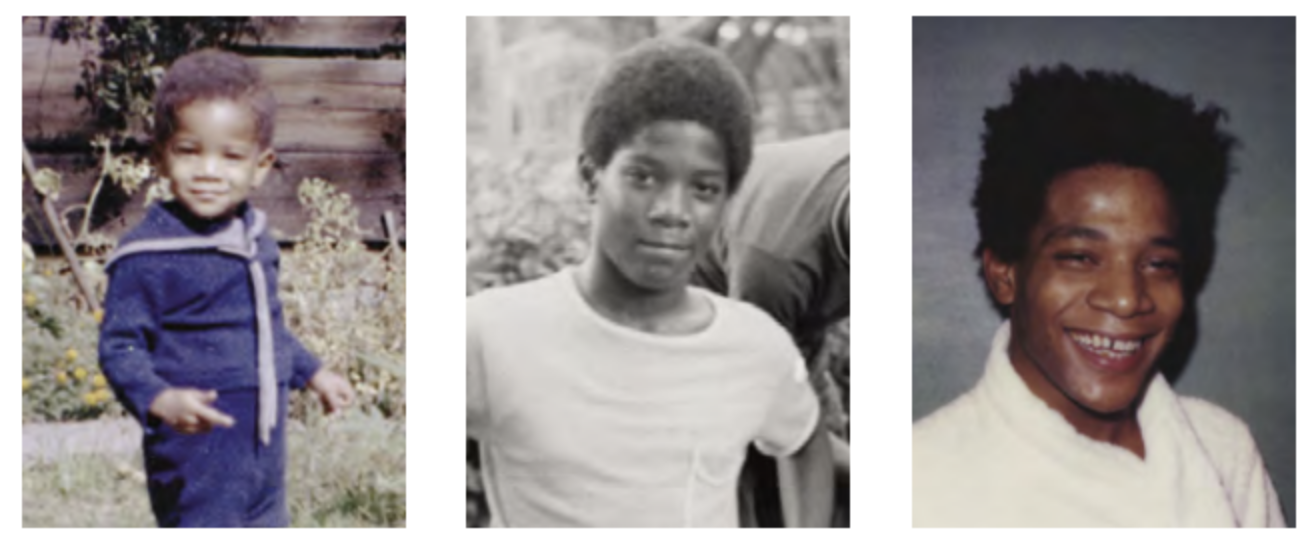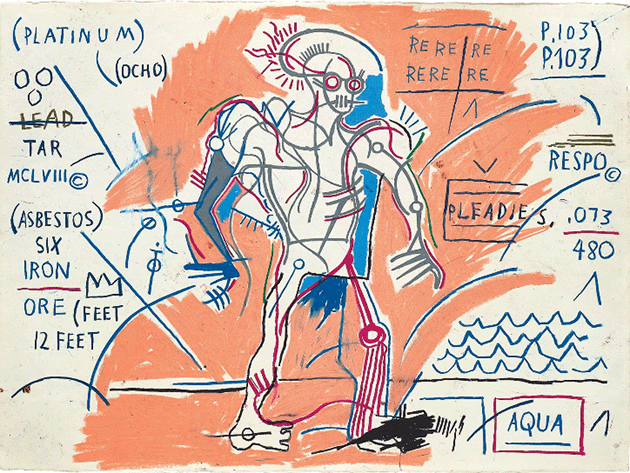Jean-Michel Basquiat’s meteoric rise from street artist to international icon was no accident of timing or luck. His early life — marked by a rich cultural heritage, emotional turbulence, and deep intellectual curiosity — was the crucible in which his artistic vision was forged. Basquiat’s brief but prolific career reflected the complexity of his upbringing, and his unique blend of street energy, academic influence, and emotional depth made his work unmistakably his own. To fully appreciate Basquiat’s artistic output, one must understand the early forces that shaped him.
A Multicultural Foundation
Born in Brooklyn, New York, on December 22, 1960, Jean-Michel Basquiat was the son of a Haitian father, Gérard Basquiat, and a Puerto Rican mother, Matilde Andrades. This bicultural background profoundly influenced his identity and later his work. From an early age, Basquiat was exposed to a rich linguistic and cultural environment — he spoke English, Spanish, and French fluently — which gave him a broad lens through which to view the world. Themes of colonialism, diaspora, and cultural hybridity would later appear in his paintings, often in the form of fragmented words, multilingual phrases, and references to African, Caribbean, and Western histories.
Matilde, who was deeply interested in art, frequently took her son to New York’s major cultural institutions, including the Brooklyn Museum and the Museum of Modern Art. These early visits left a lasting impression. At age six, Basquiat was already creating drawings that hinted at his fascination with anatomy, text, and symbolic imagery. This early exposure to classical and modern art helped build the visual vocabulary that he would later remix with elements of street culture, African heritage, and personal mythology.

Trauma and Independence
Basquiat's childhood was also marked by instability. His parents separated when he was seven, and his mother, who struggled with mental health issues, was eventually institutionalized. This separation had a profound emotional effect on him, contributing to feelings of abandonment and alienation — emotions that would later manifest in his paintings through themes of isolation, mortality, and existential struggle.
By the age of 15, Basquiat had run away from home and lived with friends or on the streets for periods of time. These years forced him into early independence and embedded him more deeply into the countercultural landscape of 1970s New York. The streets, subways, and tenements of the Lower East Side became both his studio and his canvas, offering raw material for the language, symbols, and iconography that would later define his style.
The Influence of a Car Crash and Gray’s Anatomy
At age seven, Basquiat was hit by a car while playing in the street and suffered a broken arm and internal injuries. During his recovery, his mother gave him a copy of Gray’s Anatomy, the classic medical textbook. This book became a lifelong source of inspiration. His fascination with the human body, its internal systems, and its vulnerability would become a recurring motif in his art. Skeletons, skulls, exposed organs, and dissected forms all echo the clinical, diagrammatic style of Gray’s Anatomy, fused with Basquiat’s raw expressive power.
These anatomical references were never merely technical — they became metaphors for spiritual and psychological exposure. For Basquiat, the body was a site of trauma, resilience, and identity, and his early injury helped shape that perception.

SAMO© and the Language of the Streets
In the late 1970s, Basquiat and his high school friend Al Diaz created a graffiti persona known as SAMO© (short for “Same Old Shit”). The pair began spray-painting cryptic, poetic, and often politically charged slogans on buildings and subway cars in Lower Manhattan. Phrases like “SAMO© AS AN END TO MINDWASH RELIGION, NOWHERE POLITICS AND BOGUS PHILOSOPHY” introduced a new form of graffiti — one that fused street culture with beat poetry and conceptual art.
This period marked Basquiat’s entry into the world of public art, where he used language as both protest and poetry. His use of text — often fragmented, crossed-out, or repeated — would become a signature element of his mature work. The SAMO© project also served as a transition from anonymous street artist to recognized cultural figure. By 1979, the identity of SAMO© was revealed, and Basquiat began to move beyond graffiti into painting, music, and performance art.
Intellectual Curiosity and Self-Education
Although he dropped out of high school, Basquiat was intellectually voracious. He educated himself by reading encyclopedias, history books, art theory, and African-American literature. This autodidactic streak was evident in his paintings, which often included references to Greek mythology, jazz musicians, anatomical diagrams, African spiritual symbols, and contemporary politics.
Unlike many of his contemporaries, Basquiat’s paintings were not rooted in formal academic training but in a streetwise synthesis of knowledge gathered through lived experience and independent study. His canvases became spaces of visual dialogue — dense with names, dates, symbols, and phrases that referenced everything from jazz legends like Charlie Parker and Dizzy Gillespie to the brutal history of slavery and racism in America.
This eclectic, layered style challenged the hierarchies of art and intellect. Basquiat refused the binary of “high” and “low” culture, collapsing distinctions between graffiti and fine art, street language and Latin text, primal marks and art historical references.

A Collision of Worlds
By the early 1980s, Basquiat had emerged as a prominent figure in the downtown art scene. His early experiences helped him navigate — and challenge — the largely white, elitist world of contemporary art. He brought with him the energy of the street, the rage of marginalization, and the urgency of lived experience. His Haitian and Puerto Rican roots, his experience with homelessness, and his deep knowledge of history and art all collided in works that were as intellectually rigorous as they were emotionally raw.
Basquiat’s early life gave him a rare ability to synthesize disparate worlds — the museum and the subway, the classical and the improvised, the academic and the visceral. His paintings pulsed with the chaotic energy of the city, the anguish of racial injustice, and the resilience of those who live at the margins.
Jean-Michel Basquiat’s early life was not a prelude but the foundation of his genius. His multicultural upbringing, early trauma, intellectual hunger, and immersion in New York’s underground culture shaped every aspect of his career and artistic output. Far from being incidental, these experiences were the engine of his creativity — enabling him to challenge conventions, defy categorization, and speak truth to power in a visual language entirely his own.
In understanding Basquiat’s origins, we come closer to understanding the urgency, brilliance, and legacy of his art. His work continues to resonate not just because of its aesthetic power, but because it emerged from a deeply personal, culturally rich, and emotionally charged life story — one that transformed paint and canvas into an enduring cultural revolution.
Discover signed Basquiat prints for sale and contact our galleries via info@guyhepner.com or call for latest availabilities. Looking to sell? We can help, find out how to sell Jean-Michel Basquiat prints.
